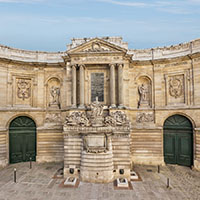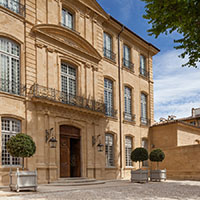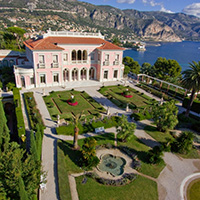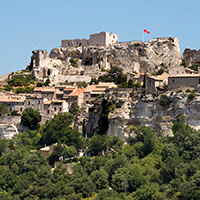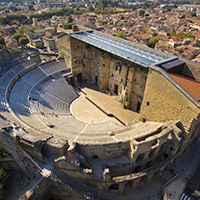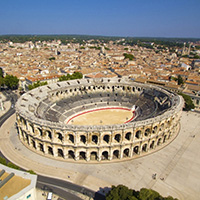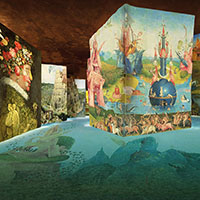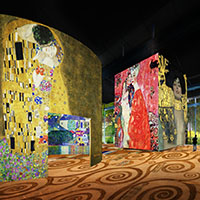The main areas
The Motor Car Experience area
 In this huge 17,000 m² hall, lit by 800 lamp posts identical to those on the Alexandre III bridge in Paris, 243 cars that have marked their era tell the story of the motorcar from 1878 through to the present today. The motorcars are organized into chronological periods :
In this huge 17,000 m² hall, lit by 800 lamp posts identical to those on the Alexandre III bridge in Paris, 243 cars that have marked their era tell the story of the motorcar from 1878 through to the present today. The motorcars are organized into chronological periods :
- The “Forerunners”: The period from 1878 to 1918 features Panhard, Peugeot, De Dion and Benz models. This was when the Panhard design defined what would be the essentials of the modern motorcar for decades to come with (from front to back): an engine, clutch, gearbox and rear-wheel transmission.
- The “Classics” cover a second phase (1918-1938) which was symbolised by the merging of two important carmakers: Mercedes and Benz. This merge marked the beginning of the "super car" era, when automobiles took on incredible power and size. Mass production of front-wheel drives by Citroën in 1934 was the great technical innovation of the era. Finally, Peugeot made an important advance when it opened the Sochaux factories.
- The “Moderns” from 1945 onwards are marked by the appearance of light, inexpensive cars. Carmakers abandoned plans for costly vehicles catering to the middle-class market to concentrate on developing cars which consumed less fuel. This advance was made possible in large part by applying the ideas of Taylorism.
The Motor Racing area
 It’s as if you were a driver on the starting grid with the decoration, sound effects, images and smells here.
It’s as if you were a driver on the starting grid with the decoration, sound effects, images and smells here.
The collection features incredible racing models, such as a two-seater Panhard-Levassor race car from 1908, a Mercedes W125 from 1937, a Maserati 250F from 1957 and a Lotus type 33 from 1963. The famous Bugatti type 32 from 1923, with its revolutionary aerodynamics, is the only car here that raced on the Tours racetrack. It still has its original engine. The cars are lined up along both sides of the central walkway, and are a snapshot of the most beautiful starting line-up in the world.
The Motor Car Masterpieces area
 This area displays 80 of the most beautiful cars from the 1930s in a midnight blue setting, with their chrome still glistening as new.
This area displays 80 of the most beautiful cars from the 1930s in a midnight blue setting, with their chrome still glistening as new.
High prestige cars, such as the Panhard-Levassor X26, the Delahaye 1935 from 1949 and the Rolls-Royce Silver Ghost from 1924, are given pride of place in the museum. The central display features the famous Bugatti Royales, including the Bugatti Royale Type 41 and the 1930 Coupe Napoleon which belonged to Ettore Bugatti.
Bugatti Veyron area
 The Bugatti Veyron is one of the jewels of the collection.Technical expertise from the fields of aeronautics and astronautics was adapted to create a braking system which is nothing short of incredible: it has a stopping distance of 31.4 metres from 100 kph (62 mph), and can stop in 10 seconds from speeds of 400 kph (250 mph).
The Bugatti Veyron is one of the jewels of the collection.Technical expertise from the fields of aeronautics and astronautics was adapted to create a braking system which is nothing short of incredible: it has a stopping distance of 31.4 metres from 100 kph (62 mph), and can stop in 10 seconds from speeds of 400 kph (250 mph).
This exceptional car deserved a spectacular presentation. That’s what the Museum has done with a five-minute presentation on the Bugatti Veyron which gives it all the attention it deserves. The car is displayed on a turning plinth so you can see every detail. Behind, large screens show a dynamic and elegant film produced by the Bugatti company, which demonstrates its exceptional technical capabilities.



